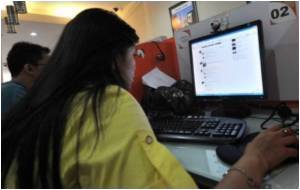
In the months that followed, more girls from the same school, all cheerleaders, started suffering from facial tics and shaking.
By March this year, 16 cheerleaders and one boy at the school had developed sporadic verbal outbursts and twitching that Lori had begun to endure months earlier. Few have since made full recoveries, while others are still showing symptoms.
The students were tested for poisoning, and air and soil samples were collected from the school.
But all the tests came back normal, and doctors now say the students are most likely suffering from conversion disorder - a type of mass hysteria.
Dr Robert Bartholomew, a sociologist and author who has been researching mass hysteria for more than 30 years, said that scenes similar to the LeRoy school case will become more common in Australia.
Advertisement
"Hysteria is spread by sight and sound, but these days social media is an extension of your eyes and ears," Stuff.co.nz quoted Dr Bartholomew as saying.
Advertisement
The New York Times reported about the case: "The story took off quickly, not just on the local and national news but on Facebook and autism blogs and sites devoted to mental health and environmental issues."
Mass hysteria comes in two forms, Dr Bartholomew said. One is triggered by an extreme and sudden exposure to stress such as the September 11 terrorist attacks.
"Suddenly people around the world would smell a weird odor or hear a loud bang and there was a group consensus it must be a terrorist attack," he said.
"That has been a very common scenario in the past 20 or 30 years."
The second type is contained to a small group of people in the same area.
Teachers see this occur when a child in a classroom says that they feel sick, leading to other classmates adderting that they feel ill too.
Such cases were initially self-contained, but Dr Bartholomew said social media meant symptoms could now spread more widely.
"The cheerleaders suffering from these symptoms in New York started posting about it on social media, which is seen by people in other classrooms and in the wider community,"
"People start to get worried, they start looking up the symptoms on the internet and on social media, and now a nurse in the community is suffering from the same symptoms as the cheerleaders too."
"Social media is evolving quickly and we need to be doing studies on those social networks and how they relate to the potential spread of illness,"
Dr Bartholomew claims some health authorities were reluctant to publicly cite mass hysteria as the reason in such cases.
"I think the big problem is the stigma attached to it,"
"If you say someone has an anxiety disorder, it is not a compliment. The victims feel like they are being told that it's all in their heads, but actually it's not all in their heads. The symptoms are there and they are going through something very real."
"Conversion disorder tends to occur in waves of direct visualization initially, but if it was taken up at community level thanks to social media, I think it's very reasonable to hypothesize that the social impact could be more rapid and widespread than previously," Dr Jim Buttery, an infectious diseases pediatrician with Monash Medical Center and the Royal Children's Hospital in Melbourne, added.
Source-ANI









